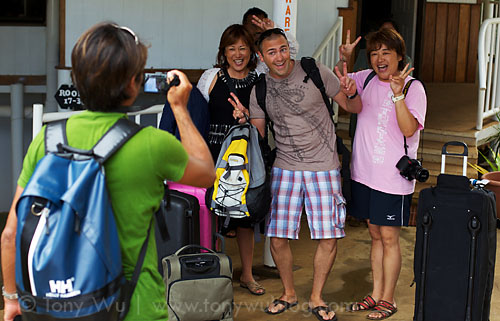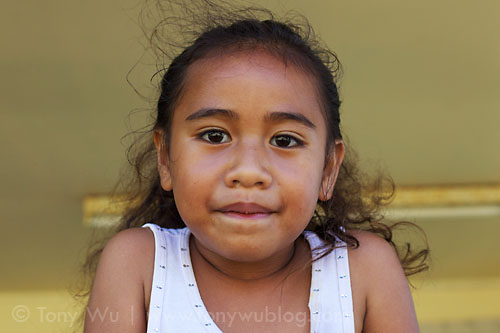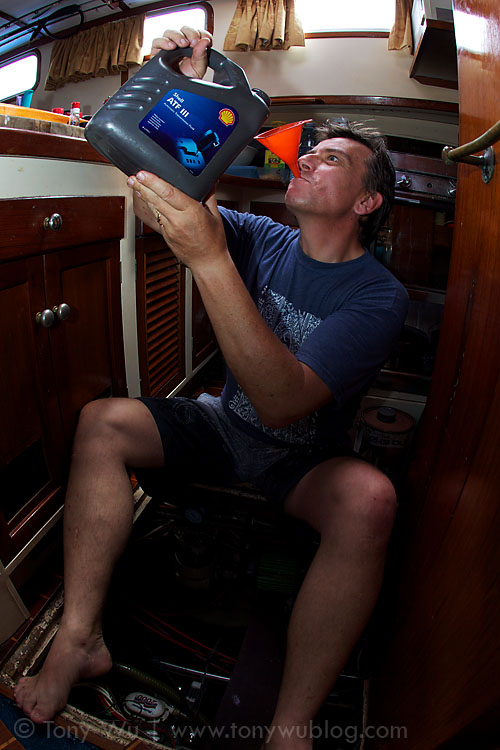I'm back home now. Sitting in quiet room, thousands of kilometres away from Tonga, facing a mountain of tasks to complete before heading out again. The usual.
When I close my eyes, I can still see Vava'u…a collection of islands spawned from tectonic collisions, now tranquil sentinels watching over a remote and magical corner of the planet. A place where the seas are the bluest of blues and the land a lush, verdant green. Where pure-white tropicbirds flit among the rocks, their elongated plumage trailing behind like feathery exclamation marks underscoring their beauty.
Most importantly for me, Vava'u is a place where majestic cetaceans, Megaptera novaeangliae, congregate once a year. They gather to socialise, to sing. To fight, to mate. To give birth, to raise their young. The humpback whales arrive, in short, to celebrate life.
It is in this context that I travel to Tonga each season to spend time with the whales. I watch, I wonder. I ponder, I conjecture. I do my best to learn, though I always find that the mysteries presented by these marine mammals far outweigh the things (I think) I've figured out about them.

Happiness is a cross-cultural language.
In recent years, I've been able to share these experiences with people who've chosen to travel with me, and in doing so, I've learned something unexpected about myself. I enjoy watching people's reactions to their virgin encounters with humpbacks almost as much as I covet my own time with the whales.
I've watched people laugh, cry, shriek, giggle, babble…and best of all, re-examine perspective. There's nothing quite like coming face-to-face with a 40-tonne sentient being to put your own existence into proper context.
On the flip side, I face a constant dilemma when I write about the whales. It's impossible for me to convey the magnitude of such an experience in words. If you've never looked a whale in the eye, there's nothing I can say or write that will communicate how powerful an experience it is.
If you are among the fortunate few who have experienced this however, there's nothing more I need say. You know what I mean.

Some people react in odd ways after seeing whales. Others are just strange.
2010 Wrap Up
If you've read my previous posts from this season, you may have gathered that it's been an oddball year, one characterised by events and trends that deviate from the norm. As such, it's been a frustrating season, but paradoxically, perhaps also one of the most educational ones.
That might not make much sense, but if I set out a handful of summary observations, perhaps the reasons underlying my sentiment will become more clear.
Weather: The weather was definitely off this season, which I assume had something to do with the current El Niño/ La Niña cycle.
The weather was almost too good for much of August, with generally low winds and warm temperatures. August is winter in the southern hemisphere, so it should've been cooler and windier. In previous seasons, I had to wear fleece every day to keep warm, but this year, I only broke out my fleece jacket for a couple of days in September. Bad weather did hit at the beginning of September, but it wasn't too bad, and the air temperature was still warmer than usual.
As an aside, the best indicators I've found for gauging ambient temperature in Vava'u are the kapok (Ceiba pentandra) trees. In most years, the seed pods of the trees remain green (i.e., unripe) for the entire duration of my stay.
In some seasons, like this year, the seed pods turn brown and drop before I depart, discharging the cottony stuff inside that protects the trees' seeds. This is a sure sign of warmer-than-average conditions.

It was an oddball year.
Water Temperature: I don't know if there's any general correlation between warm air temperature and warm water temperature, but I'm certain that the water temperature this season was also higher than normal.
I normally get mild hypothermia every day I'm in the water. I use a thin suit, and I lose body heat quickly.
This season however…not once.
While the warmer-than-usual air and water temperatures were pleasant, the prevailing conditions may have had some effect on marine life, including the whales.

My friend Rika
Whale Numbers: It seemed that there were fewer whales than average. It's impossible to be certain, since no one really knows how many whales are around Vava'u in an "average" year, but all the experienced people I spoke with concur with this view.
Interestingly, some of the other wintering grounds in the southern hemisphere (like Niue) also reported fewer whales than normal, while others reported seeing more whales than they've ever had (Tahiti, Cook Islands). Some places in Australia reported more whales and earlier-than-normal feeding, while others contradicted such reports.
So basically, most every place reported either more or fewer whales, but not a normal number of humpbacks. Hmmm.

Looking hard for those darn humpback whales
Whale Timing: Everyone pretty much agreed that what whales were present were about two weeks late arriving in Vava'u.
Whether the whales stay longer than normal (some are still there) is something that will be interesting to watch.
I can't help but feeling that the warmer water and warmer air temperatures this season have something to do with the funky distribution of whale numbers and the delayed timing of their arrival to Vava'u. I can't prove anything, but it sure feels like there's some sort of link.

Oops, wrong type of whale
Whale Mood: The adjective most often used to describe the mood of the humpback whales around Vava'u this season was "unsettled". With some limited exceptions, the whales just wouldn't stop moving.
Many of the mother/ calf pairs we encountered for instance, were go-go-go-go, with little to no rest time. I also encountered lots of heat runs, which are by definition action-packed.
I wrote in earlier posts about my conjecture that this agitated mood might have been driven by a higher-than-normal horny male to available female ratio, based in large part on observing the early and constant harassment of mothers with baby whales by multiple escorts.
Again, it's not something I can prove beyond the shadow of a doubt, but other experienced people noticed the same trend, and there was no change in the behaviour during the two months I was in Tonga.

Relaxed evening, bathed in warm light of the setting sun
Baby Whales: We ended the season with a count of 24 baby whales (subject to going through all our photos again and reconfirming the count), which is only two shy of the count of 26 calfs we had last year when we left Vava'u.
This was a bit of surprise, as there didn't seem to be many babies (or whales in general) early in the season. I made a bet with a friend in Vava'u that there would be less than ten babies. She said 12, or something on that order of magnitude.
So we both lost the bet. It's one of the few bets I'm delighted to lose!
We had a spurt of baby whale sightings and IDs toward the end of our stay, so it may be that the late arrival of the whales prejudiced our early observations.
In any event, I'm hoping that people who are in Vava'u now and later in the season will send me more IDs, so we can increase the calf count like we did last year, when the tally went from 26 to 31 thanks to help from other people.
One thing does confound me though. I've seen a lot of heat runs this year, and the baby count is also relatively high. In past seasons, the number of heat runs and relative abundance of calfs seems to have been inversely related, so this season kinda blows a hole right through that possible correlation. Sigh.
A friend did observe however that there seemed to be a high proportion of small/ young whales mixed in among the heat runs this year. This might be important. It might not. But it's something I need to keep in mind for future seasons, to see if there's any possible correlation to or effect on the calf count.

Kiri (24th ID-ed calf of the season, female)
Long-stay Baby Whales: We also documented a couple of mother and calf pairs that stuck around for a long time, at least 15 days in the case of Ikumi (5th ID-ed calf of the season).
As I noted before, it's quite possible that mother/ calf pairs have stayed around for just as long in previous seasons and we didn't notice, but with all the non-standard stuff going on this year, I'm inclined to think that the long stays are an exception.
During the two weeks when Ikumi and mom were around, we literally saw no other whales in proximity to the pair on many days. My conjecture is that there were few to no other whales around to exert pressure on the mother/ calf pair to move on (which would be consistent with the observation that there were fewer whales around than normal, as well as the fact that we didn't encounter many other mother/ calf pairs during that two-week period).
If I can keep the calf count going, we'll hopefully learn more in coming years to get additional insight as to whether long stays are the norm or the exception.

My friend Fita
All Blacks and White Hands: There were lots of all-black, or nearly all-black whales around. There are always some present in the population, but this season, the ratio was disproportionately large, and spread throughout males, females and babies.
Why this was the case and what it means is anyone's guess.
On a related note, we ended the season with 1.5 white-pectoral whales (the 0.5 being a whale with a half-white dorsal surface on its pectoral fins), with a possible sighting of another white hand by a friend.
This is a fairly normal number of sightings, but contrasts with 2006, when we saw a great deal more (I haven't plowed through my photos from that year to determine the exact number).
Both the sudden appearance of numerous All-Black whales this season and the White-Hand bloom in 2006 are things that stick in my mind, begging for an explanation.

Striking a pose
Inter-Male Interactions: This season, I watched two male humpback whales that behaved like a mother/ calf pair (Dancing Queen in Part 3), and three males at Toku Island (Social Interaction in Part 6) that acted like a mating pair would typically behave.
I have no clue what this means, or how common this type of male-male interaction is, but it's intriguing to say the least.
Perhaps this type of inter-male interaction is quite common and I just never noticed, or perhaps such behaviour was driven by a relative dearth of females, as I posited earlier.
It's one of the many odd things we observed this season to keep in mind and look for in the future.

Yup, it was definitely an oddball year.
Non-Song Song:
Early in the season, we came across and recorded a series of vocalising whales that helped to support my contention that not all humpback whales in the area sing the same song (see Part 1).
As it turns out, I'm probably partially correct. Based on the recordings and associated photographs, the most likely explanation for what I've noticed in the past is that juvenile males may "practice" singing, making song-like sounds in the process, which, to an untrained human ear, can sound like song but isn't actually song.
Confusing, eh?
As soon as I'm able to do so, I'll work with Dr. John Potter to sort out relevant snippets of our recordings and write more about this particular observation.

John demonstrating why he has a PhD
Tonga 2011
There was a lot more that happened during my stay in Vava'u, but the points above cover my main whale-related observations.
What's clear is that the more I learn about the whales each season, the more there is to figure out. It's frustrating, but fascinating at the same time. It's a challenge, and it's an addiction.
I'm just about finished planning my schedule for next season, but first I need to go through all my photos and reconfirm our calf IDs for this year, then pull all the data together into a PDF summary and Google Map. Even though I only have a few days before I head to Ogasawara, I'm determined to get this done and posted before I depart (gulp).
For next season, I'm planning to expand the acoustics work I started with John Potter this year. I'm really excited, as what I have planned will be the culmination of a few years of discussion and preparation, and I'm looking forward to working with and learning from an accomplished and knowledgeable person like John.

Sending off fellow adventurers at Vava'u airport
Moreover, like my calf count project, this new initiative will be a cooperative effort, with the help and participation of many people…all in the pursuit of the common goal of learning more about the humpbacks that visit Vava'u.
I'll post details about this project soon.
In addition, I'll carry on with the calf count. As we continue to ID baby whales each season, we're documenting their movements, personalities, interactions with other whales, preferred locations, and a whole lot more.
With the help of other people, the calf count is becoming a communal project, which was my goal from the beginning. I'm hoping that more and more people will help each year, so our glimpse into the lives of humpback whale mother and calf pairs becomes increasingly detailed.
As an aside, I'm trying to figure out a way to aggregate the calf data into an online database that can be accessed and studied by anyone who's interested, so more people can see the information, and perhaps even discern trends or clues relating to the whales' behaviour. The more eyes and brains, the better!
If you're a database expert and might be interested in helping, or know someone who fits the description, can you let me know?
Finally, I'd like to extend a huge "Thank You!" to everyone who travelled with me this season. You were all terrific company (despite what I may have said to some of you), and I'm looking forward (I think) to seeing many of you again next season.

This is how happy I was when certain people were leaving 😊
That's it for now.
If you want to get a heads-up before I make my Tonga 2011 schedule public, please sign up for my trip newsletter.
Oh...almost forgot (not really). Here's a short video of Rachel doing her impression of a baby humpback whale.
She didn't want me to post this, so I really had no choice. Absolutely none whatsoever.
Related Posts
Humpback Whales in Tonga 2010 | Part 1
Humpback Whales in Tonga 2010 | Part 2
Humpback Whales in Tonga 2010 | Part 3
Humpback Whales in Tonga 2010 | Part 4
Humpback Whales in Tonga 2010 | Part 5
Humpback Whales in Tonga 2010 | Part 6
Humpback Whales in Tonga 2010 | Part 7